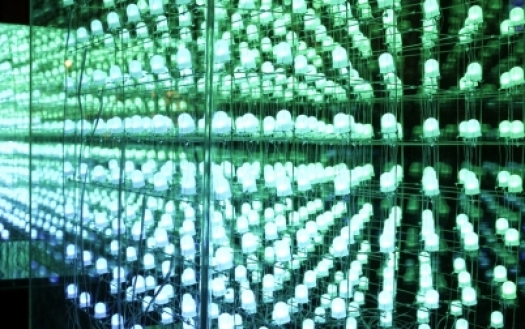Cree: guiding light

Cree has raised performance standards for high power LEDs but can the US manufacturer deliver through tough times, asks Compound Semiconductor.
LEDs: is cool light out and warm light in?
Earlier this year, Cree unveiled a single high-power R&D LED that delivered nearly 1600 Lumens at 134 Lumens per Watt.
At the time, the US-based lighting industry leader claimed a LED Lumens per Watt record compared to production LEDs with a similar colour quality. And crucially, that colour quality was a warm white, on par with the incandescent light bulb.
"If you look at the big Lumens per Watt numbers that are out there, these are for cooler light LEDs that emit towards the more blue end of the spectrum," points out Paul Scheidt, leader of product marketing, LED components, at Cree.
"These LEDs make great headlines, but light quality is sacrificed for efficiency and this just isn't the kind of light people will use in life," he adds. "So now we think there is a lot more room [for development] with warmer colour temperatures and practical lighting."
According to Scheidt, researchers at Cree are currently focusing on improving the spectral content and efficacy of warmer colour temperature LEDs, while, as always, looking to increase the Lumens per Watt under real-world operating conditions.
"For LEDs with a warm correlated colour temperature [light source colour appearance] and a high colour rendering index, we've boosted efficacy by 25% [in the R&D LEDs]," he says. "By the laws of physics losses exist that we can't get rid of, but there are other losses that we still think we can overcome."
To date, the company's 'TrueWhite LEDs' have been testament to this, boasting a high colour quality and high efficacy with a high lumen output. But Cree has taken a different approach with the latest R&D LEDs.
"Our TrueWhite technology has used two channel colour mixing... we take greenish-white LEDs and red LEDs to create warmer high CRI lighting," says Scheidt. "But in the research and development announcement we have been experimenting with a single LED so we don't require, for example, two separate control schemes."
"We've achieved results in the lab and are now working on making this production ready," he adds. "We're really working to close that [Lumen per Watt] gap between [cool and warm] LEDs.
LED backbone
At the heart of many of Cree's LEDs, lies the so-called SC5 Technology platform. Launched in late 2014, the platform is based on the company's SiC substrates alongside intellectual property in epitaxy, chip architecture and light conversion systems.
The platform has spawned myriad LEDs, including the company's first Extreme High Power (XHP) LEDs, claimed to reduce systems costs by up to 40% while providing the necessary Lumens per Watts and lifetimes at high operating temperatures.
More XHP LEDs have since followed, including Cree's single-die device, the XHP 35, which according to Scheidt, is based on a 'breakthrough in chip design' that delivers 12V on a single die.
The product manager remains tight lipped on the detail surrounding the company's platform and LEDs, but highlights: "We delivered the first XHPs in late 2014 and from the beginning it's been about driving these LEDs to higher temperatures than seen before."
"At the time, we were using the latest of everything we had with the SC5 platform providing improvements in packaging construction, from the materials used to how the chip was packaged," he says. "And for the actual die, this included the latest phosphors and encapsulants."
LED breakthroughs aside, and following its single die approach, the company is clearly focusing on minimising component count within its LED systems. Many in the the industry point to the high cost of LEDs as hampering the widespread adoption of solid state lighting.
But as Scheidt asserts, LEDs contribute to only around 20% of the total lighting system cost, and in terms of Lumens per dollar, LED light sources are at least as cheap as the fluorescent tube.
"The cost lies with the remaining 80% [of components] that make up the full luminaire... which include plastics, heat sinks, power converters, which are all very mature from an electronics point of view," he says.
Cree now intends to strip away this content, and drive costs down further. "People point at LED systems, and especially packaged LED manufacturers, and think here is the problem, but nothing could be further from the truth," he says.
In the meantime, Scheidt is certain packaged LEDs, as well as the more affluent luminaire market, will remain important to Cree. But, like other packaged LED manufacturers, Cree is still grappling with tough market conditions.
A strong US dollar in 2015 combined with low cost LEDs coming from China- and Korea-based companies, saw revenues declining for Cree, LG Innotek, Nichia and more.
As Scheidt puts it: "Talk to any market analyst about packaged LEDs in 2015, and it was a bad year for everyone. It's been more a case of how well did you survive and I think Cree has done ok."
Scheidt points to aggressive pricing continuing from many suppliers but adds: "A company can't keep running on little to no margins with infinite capacity so it's really a question of when will [these manufacturers] hit their limits."


































